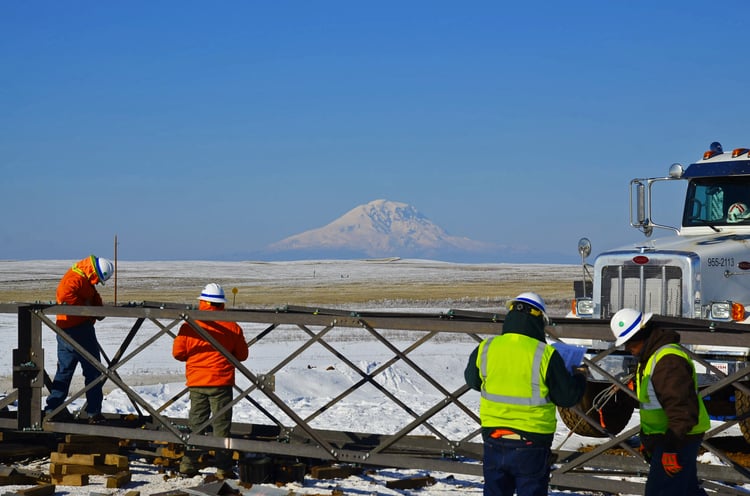
As a Project Manager working on a variety of projects throughout Oregon, Washington, and California, I have learned establishing good teaming relationships with your sub consultants on each project team can lead to effective communication, better efficiency, and fewer project development delays. It’s more than just working with, or as, a sub consultant, it’s building a partnership.
I have experienced the evolution of team building first-hand, and it is amazing what a true team relationship can produce. I have experienced a “team” where communication and collaboration between stakeholders is sparse, and I have experienced a team where communication and collaboration between stakeholders is stellar.
MacKay Sposito had the pleasure of bringing on an environmental firm and an archaeological firm to assist in the permitting of smaller access road projects. We had worked with the same environmental consultant on a previous access roads project, but the teaming structure was different and we rarely directly communicated with the environmental consultant. At times, it felt like we were playing the game of telephone to transmit information between us (the engineers) and the environmentalists. Needless to say, efficiency was not great for the simple fact that information was often conveyed incorrectly. Not only that, the only opportunity we had to communicate directly with the stakeholders was limited to a monthly team meeting. By establishing this new team, the goal was to increase the performance of all parties involved.
To accomplish this, we made certain to assure communication was a priority. We developed a great relationship with each project manager of these firms, which allowed us the comfort to pick up the phone and call each other when questions, concerns, or problems arose. Working together with the same team also provided consistency for each project. The client knew who their project team was and could trust that each project was completed using the same personnel and methods. Lastly, efficiency in permitting increased because information was directly, therefore correctly and promptly, conveyed to the other team members.
We continue to work with the aforementioned environmental firm for a different client and even though the roles are reversed and we are a sub-consultant to them, the dynamics feel the same and it’s as if nothing changed. There has been collaboration and communication from the beginning, which has allowed us, the designers, to better understand the environmental constraints, which vary at each site, that may come up during the permitting process. Knowing these environmental constraints beforehand allows us to proceed with the design, minimizing or eliminating environmental impacts. This is a huge benefit because if the environmental constraints are known from the beginning, the chance of a redesign or modification to the design to address the constraints is greatly reduced.

With any project, consistency, efficiency, and accuracy are important. One thing I have learned is to build a good working relationship from the beginning. Treating the prime or your sub-consultants as an extension of your team, rather than just a “sub-consultant”, can help build trust. With trust, the relationship established can lead to effective collaboration, the ability to work well together, and trust each other's input, which results in completing projects accurately, efficiently, and to the client’s satisfaction.
Have any questions?
Email me at jfulton@mackaysposito.com

